Farms, More Productive Than Ever, Are Poisoning Drinking Water in Rural America (#GotBitcoin?)
One in seven Americans drink from private wells, which are being polluted by contaminants from manure and fertilizer. Farms, More Productive Than Ever, Are Poisoning Drinking Water in Rural America
Chuck Wagner has given up on drawing clean water from his faucets.
When he moved, 23 years ago, to 80 acres situated between dairy farms in northeastern Wisconsin, he built a home and drilled a 123-foot well. The water tested clean, and his family drank it. Five years later, tests showed it was contaminated with bacteria and nitrates, potentially harmful and often derived from nitrogen in manure and fertilizer.

The contamination increased over time, and his family now drinks bottled water. Mr. Wagner, a 68-year-old retired engineer, believes the pollutants are from the dairies next door.
One of those, Kinnard Farms, keeps 7,000 Holsteins and spreads the manure on nearby fields. “Farmers are a big footprint,” says Lee Kinnard, 50, who runs the fifth-generation dairy. “I’m not going to say that what we do on the surface can’t have an impact.”
Trickle Down
Bedrock called Silurian dolomite is fractured, and aquifers under it are vulnerable to infiltration of contaminants from the surface.

One in seven Americans drink from private wells, according to the U.S. Geological Survey. Nitrate concentrations rose significantly in 21% of regions where USGS researchers tested groundwater from 2002 through 2012, compared with the 13 prior years. The greatest increases were in agricultural areas. More recent sampling shows the pattern is continuing, at a potentially greater rate.
Meanwhile, more than 16% of groundwater from wells sampled between 2002 and 2012 topped the federal nitrate limit of 10 parts per million, versus 12% in the 1990s. The percentage above the limit fell slightly in the wells sampled after 2013 but remained elevated.
Down To The Ground
As fertilizer became a fixture on American farms, groundwater contamination rose, and it remains elevated.
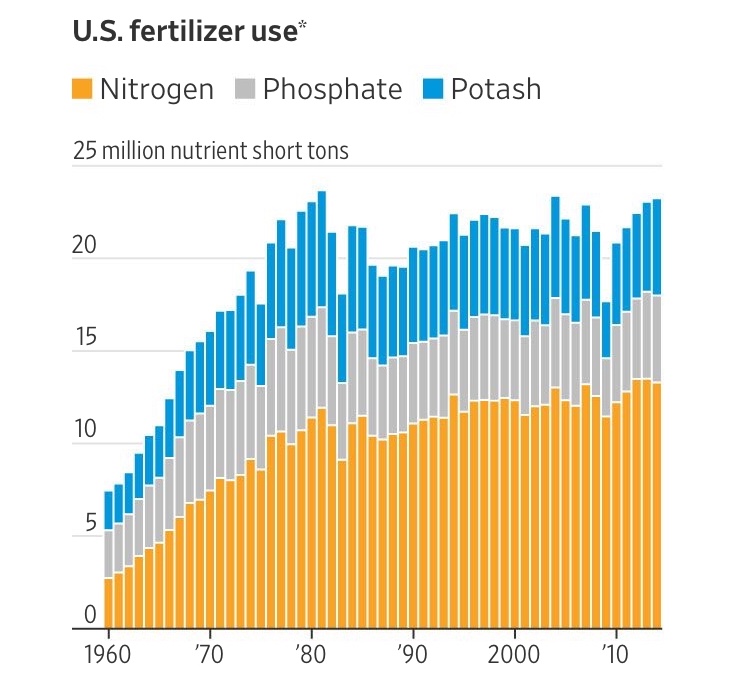
“The worst-kept secret is how vulnerable private wells are to agricultural runoff,” says David Cwiertny, director of the University of Iowa’s Center for Health Effects of Environmental Contamination.
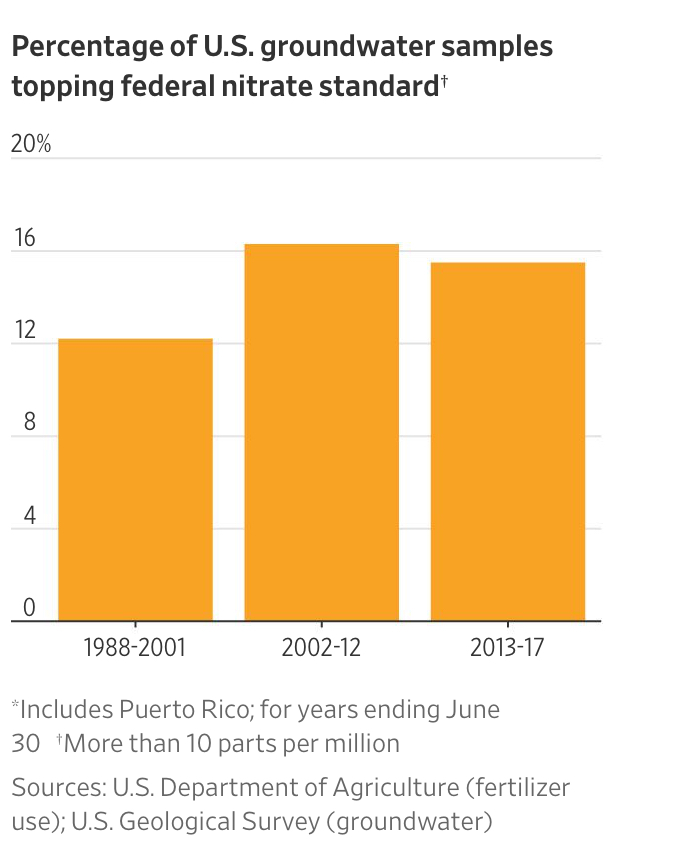
The Wagners and Kinnards live in one of many U.S. regions where the interests of the agricultural economy are colliding with those of residents relying on aquifers.
In Kewaunee County, nearly 30% of private wells contain bacteria or elevated levels of nitrates, according to a state-commissioned study of samples taken in 2015 and 2016. An administrative-law judge, ruling on an objection from residents to a Kinnard Farms expansion plan, called the county’s water problem a crisis and allowed the dairy to proceed on the condition it take steps to prevent contamination.
Among factors producing contaminants: fewer, more-intensively worked farms, bigger cows and shifting crop mixes.
Those factors have helped drive abundance in the U.S. farm economy. Corn and soybean harvests have hit records, as have pork, poultry and dairy production. Farmers and their supporters say America needs to balance environmental concerns with food security.
Farmers can’t produce milk and cheese at the low prices American consumers have grown accustomed to without some effect on water, says Mr. Kinnard, who says practices he and his peers are implementing will improve Kewaunee’s soils and water over time. “The alternative here,” he says, “is a society that depends upon other countries to feed us.”
One farm-economy byproduct is manure, which farmers spread across millions of acres and contains nutrients such as nitrates that researchers have associated with birth defects, thyroid problems, cancer and a potentially fatal condition in infants. Another byproduct is decades-old water, laden with nitrates from a nationwide run-up in chemical-fertilizer usage, that is sinking closer to drinking water in some areas, says Bruce Lindsey, a USGS hydrologist.
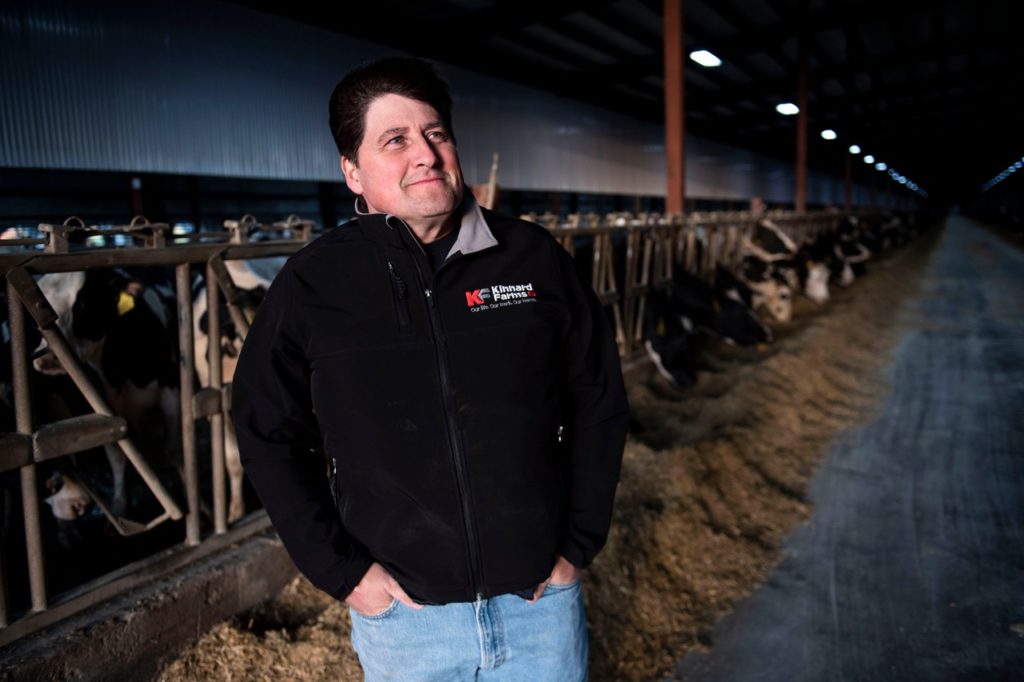
Runoff from fields is largely exempt from federal regulation. Many water utilities in the Midwest are struggling to pay for flushing farm runoff from their systems, say scientists and utility managers. Close to 500 public water systems in the U.S. exceeded federal nitrate limits in 2016, according to Environmental Protection Agency data. That is a sliver of the nation’s 151,000 water systems but a 13% increase from the portion that surpassed the limit two decades earlier.
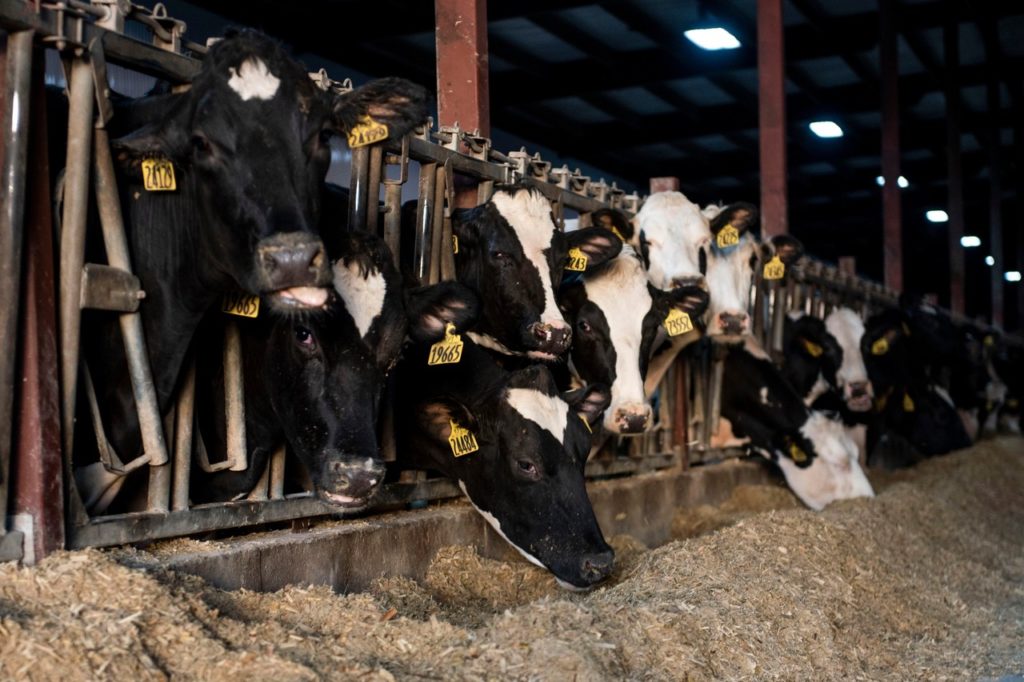
Towns sometimes abandon contaminated wells or mix water from multiple wells to dilute contaminants instead of making expensive treatment upgrades, say researchers such as Bruce Dvorak, a University of Nebraska civil-engineering professor. Some small towns hesitate to pressure farmers, who generate jobs and tax revenue.
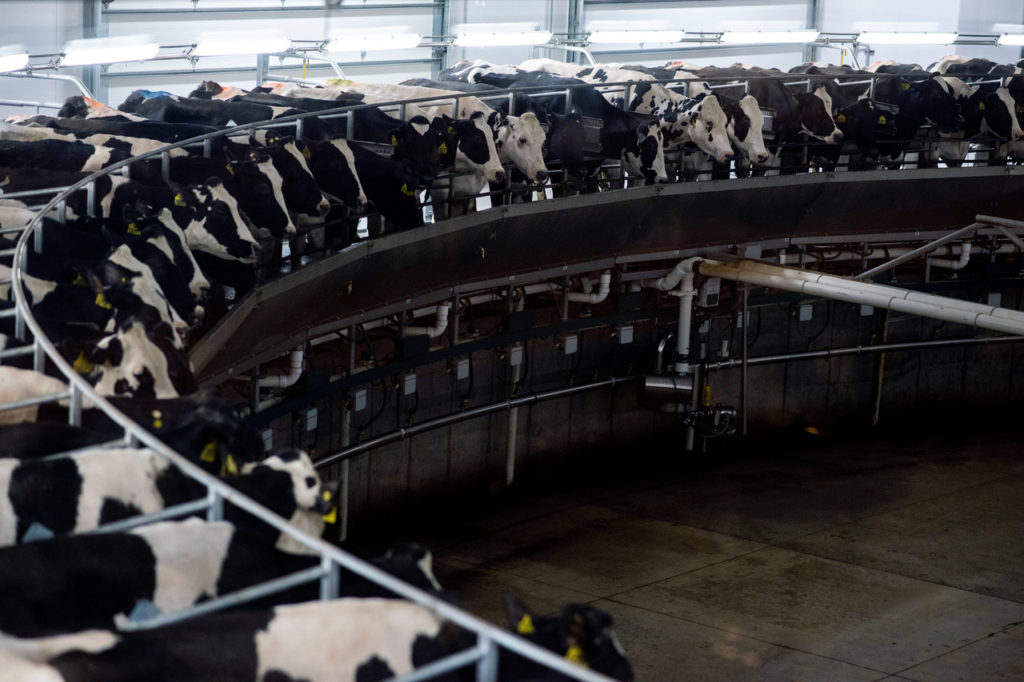
“It’s a broken system,” says Bill Stowe, chief executive of Des Moines Water Works, referring to how municipalities must pay for contamination from upstream farms. His utility lost a federal lawsuit in 2017 to force three counties to clean farm runoff draining into the Iowa capital’s drinking water.
Scientists say groundwater contamination could be cut by reducing fertilizer use. Other land researchers and environmentalists want farmers to reduce use of underground pipes that wick water and its contents away from fields.
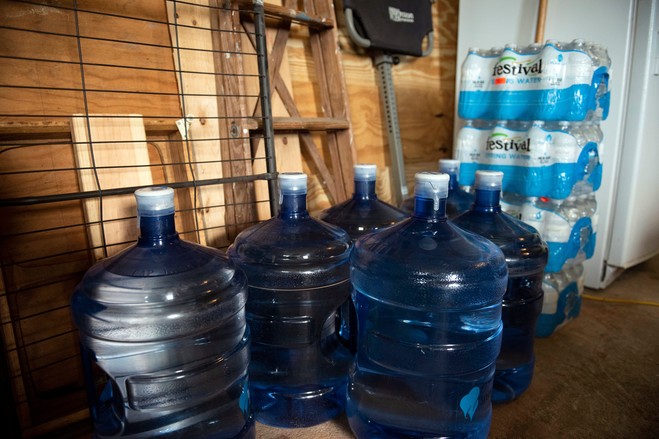
Land researchers are urging farmers to change cultivation practices to cut water contamination. That includes sowing “cover crops” to hold soil in place between plantings and adding buffers of fallow land along field edges.
In Wisconsin last year, then-Gov. Scott Walker approved stricter manure-spreading standards for vulnerable fields in eastern parts of the state including Kewaunee. The county in 2016 prohibited manure-spreading over shallow soils from January to mid-April, which officials say has reduced well-water contamination.
Still, “our ability to reduce nitrate losses is not as impactful as people would hope,” says University of Wisconsin groundwater specialist Kevin Masarik. He says many dairy farmers in Kewaunee are seeking to expand, and “it’s unclear where all that manure is going to go and do we have the tools and oversight in place to make sure it’s done in a good way.”
Wisconsin saw more than a sixfold increase in the number of public water systems with nitrate topping 10 parts per million between 1994 and 2017, according to its natural-resources department. Some hotels and gas stations in the state warn customers such as pregnant women not to drink from taps.
Tony Evers, who defeated Mr. Walker for the governorship in November, pledged during his campaign to clean up drinking water. On Jan. 2, state and federal researchers released data showing widespread well-water contamination in three southwest-Wisconsin counties that are home to thin soils and intensive agriculture.
A County Crisis
In Kewaunee County, the frequency with which pathogens including E. coli, salmonella, rotavirus and cryptosporidium occur in water is similar to what researchers might expect to find in some developing countries, says Mark Borchardt, a U.S. Agriculture Department microbiologist who led the studies in Kewaunee and southwest Wisconsin.
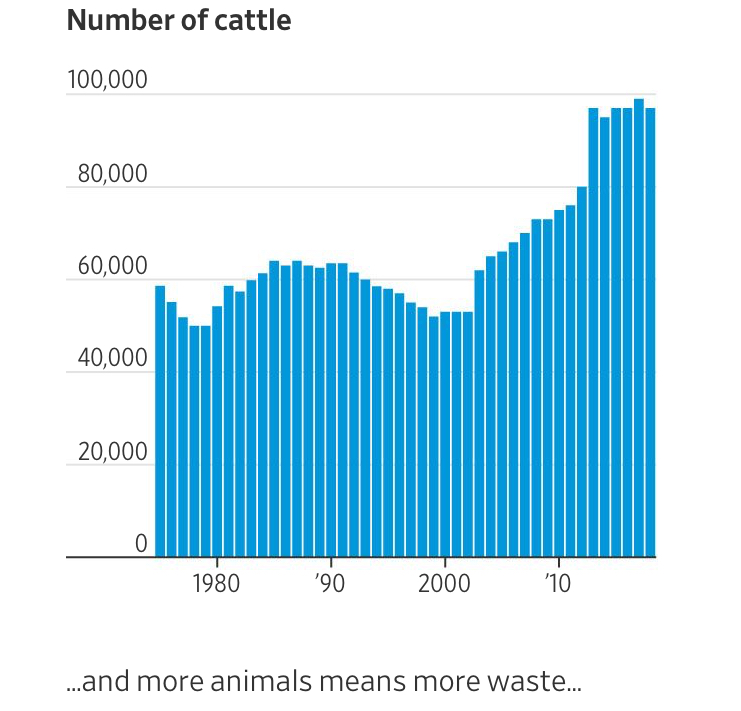
Some contamination comes from septic systems, he says. In parts of Kewaunee County, more than one-fifth of private wells surpassed the federal nitrate limit, according to data aggregated by the University of Wisconsin since 2004.
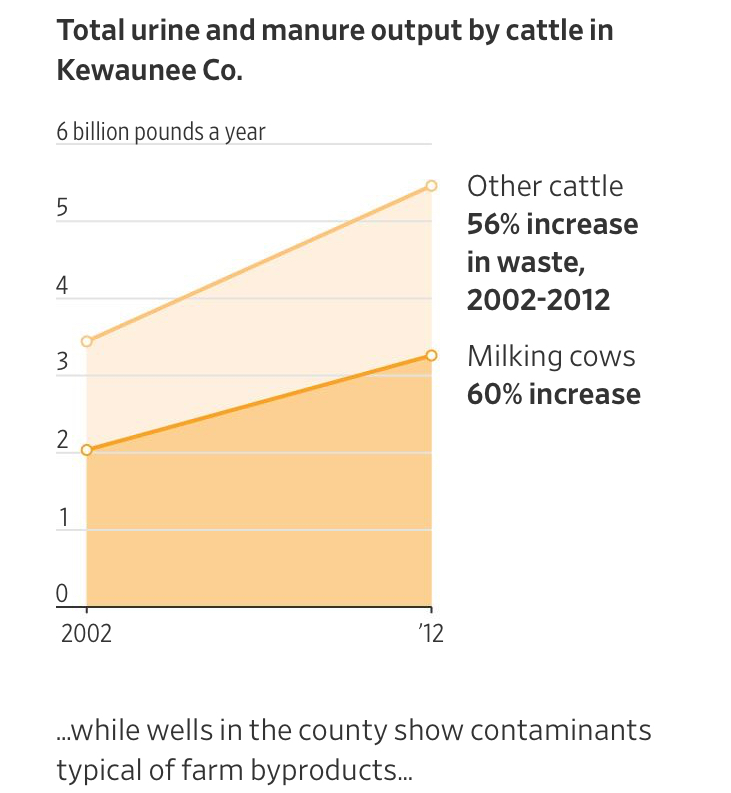
The county welcomes visitors with a sign: “The Good Life on a Great Lake.” Farmers here are praised at their funerals for not missing a day of milking.

Mr. Kinnard of Kinnard Farms says his ancestors, dairy farmers and fisherman from Belgium, were drawn in the 1800s to the Lake Michigan breezes that could keep cows cool and to soils suited to the alfalfa the animals ate. They brought nine cows whose descendants still reside in Kinnard barns.
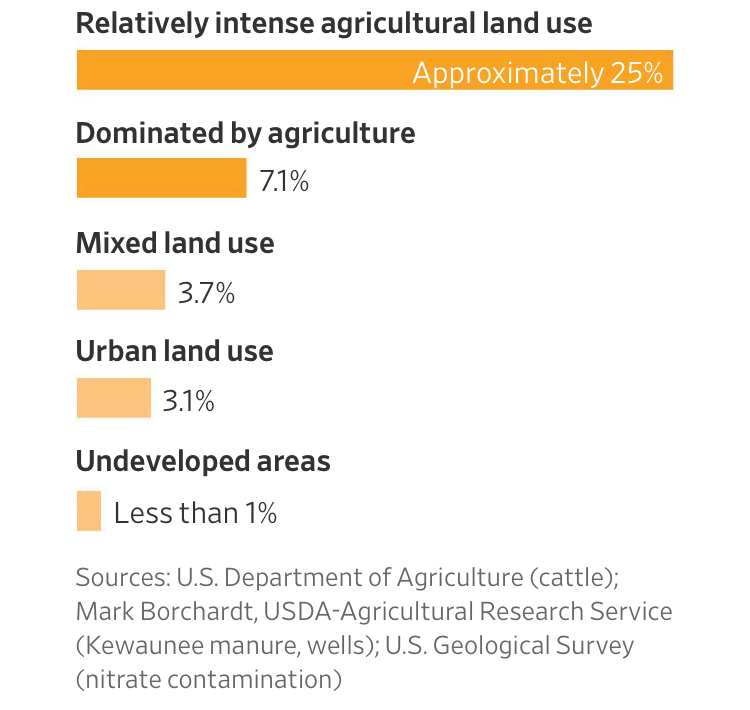
Mr. Kinnard points to nine smaller dairies that have disappeared from the valley surrounding his farm in recent years—part of a broader consolidation among American farms. Kinnard Farms has absorbed more than 100 farms over the past 30 years.
New Pastures
The average U.S. dairy herd size grew as the number of farms fell.

Many smaller dairies nationwide have folded as falling U.S. milk consumption depressed prices. As of 2012, half of U.S. dairy cows were on farms with more than 900 cows, the USDA says; in the late 1980s, half were on farms with more than 80. Cattle in Kewaunee outnumber people 5 to 1, federal data show, compared with 2.5 to 1 in 2000.

Larger dairies produce more milk at a greater scale. Cows today are bigger than in the past, so they eat—and excrete—more. Milk production per cow more than doubled between 1970 and 2017, according to the USDA. Farmers are growing less alfalfa to feed their animals and more corn, which requires more nitrogen fertilizer.
The Kinnard cows live around the clock in a 19-acre shed, milked every eight hours on a largely automated carousel. Trucks bring feed, fans chill the air and lights simulate day and night.
Tractor-trailers haul away manure to be spread on more than 10,000 acres nearby where Mr. Kinnard says his family grows corn and alfalfa as feed. In years past, they and other farmers applied manure in a more solid state. Now, they mix it with wastewater to create a liquid. Mr. Kinnard says changing regulations drove the shift.

Mr. Wagner, his neighbor with the tap-water problem, says growing up in the county prepared him for life amid farms when he moved back in 1996. “I knew I would smell manure,” he says. “But not every day.”
He discovered his well water was contaminated after his daughter asked him to test it before she mixed baby formula. He found elevated levels of nitrate as well as coliform, bacteria indicating possible fecal contamination, and at times, E. coli. The nitrates climbed over time to as high as 39 parts per million, four times the EPA maximum.
When snow melted in spring, he noticed starting in 2002, his water ran the color of lager. Mr. Wagner took his concerns to the Kinnards years ago, laying out his worries at their kitchen table. “They’ve gone above and beyond to try to do the right thing,” he says. “This took a long time to happen, and it’s going to take a long time to fix.”
Countermeasures
Among countermeasures Mr. Kinnard has taken: He plants cover crops such as oats and clover on about half his acres to soak up nutrients and put organic material back into the soil. He uses a swimming-pool-size pit of tree bark to filter nitrates from water flowing from his fields into culverts that lead toward Lake Michigan. He believes that system, essentially a man-made wetland, could help farmers across the Farm Belt mitigate nutrient runoff.
Several peers operate digesters that reduce pathogens in manure and produce methane that can be burned to produce electricity.
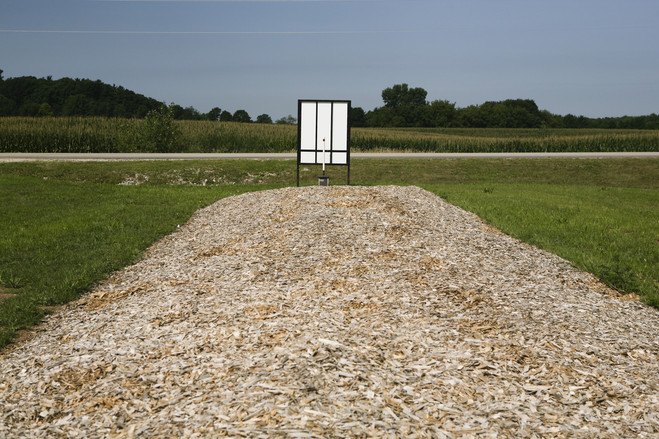
Some Kewaunee residents say manure from growing dairy herds is too much for an area characterized by shallow soils and fractured bedrock called Silurian dolomite. A group of residents challenged a permit about seven years ago that let the Kinnards expand their farm more than 50% without what the residents felt were adequate water-quality protections.
They testified before administrative-law judge Jeffrey Boldt of Wisconsin’s Division of Hearings and Appeals in Green Bay that drinking polluted water made them sick. The judge in 2014 allowed the expansion but ordered the Kinnards to take protective measures including installing six monitoring wells at their cowshed and on fields where they spread manure.
Mr. Kinnard appealed. He says his family has worked for years to limit impact on groundwater and such regulations block him from experimenting with ways to improve his land and nearby waters. “My family lives next to these fields also,” he says. Other appeals followed, and a state appeals court on Wednesday asked the Wisconsin Supreme Court to take up the case.
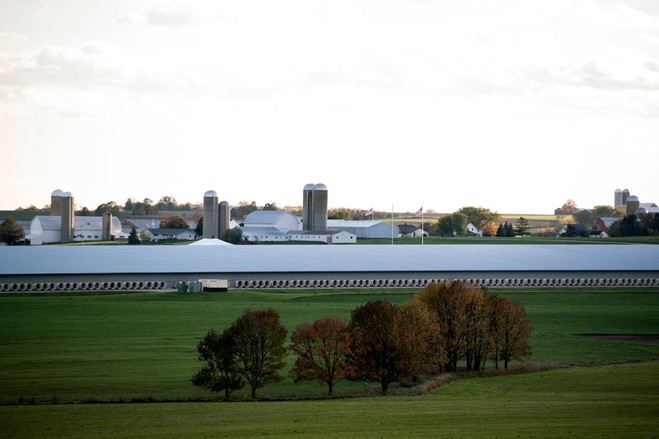
Mr. Kinnard and other farmers in Kewaunee say that there have been “brown water events” in the county for years and that what they are facing now is growing opposition from urban transplants with few ties to farming.
Farmers in 2016 founded Peninsula Pride Farms, a group to address complaints about dairy’s impact and to share techniques for improving water and soil quality. Among those it helped was Erika Balza, who can see six dairy farms from her lawn.
One night about two years ago, she says, she opened her bathroom faucet to a gush of muddy brown water smelling like manure. That hadn’t happened before. Tests revealed her well was contaminated with E. coli and other bacteria.
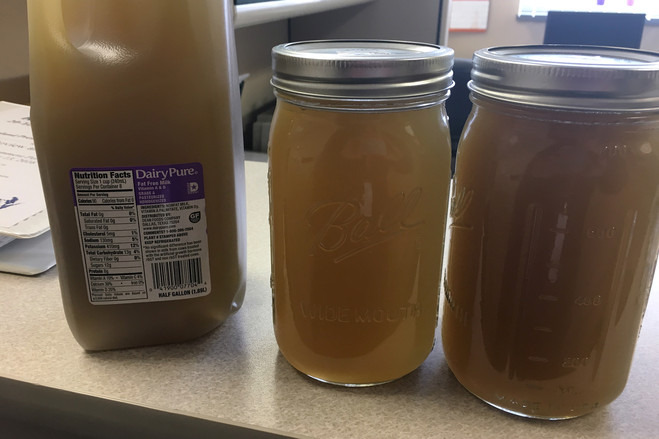
The Balzas drilled a new well with state help. Last spring, tests revealed coliform bacteria and elevated nitrate levels. They treated the well with chlorine but don’t drink from it despite recent evidence it is bacteria-free. “You just can’t trust it,” says Ms. Balza, 48.
Peninsula Pride provided clean water to the Balzas for about six months after they discovered their well was polluted. The group is trying to balance the drive toward scale in the dairy industry and the impact on the land, says Don Niles, a dairy farmer and Peninsula Pride founder.
“There’s a greater chasm forming between farmers and nonfarmers,” he says. “We feel we can have both clean, healthy, safe drinking water and a thriving agricultural sector.”
Mr. Wagner has been drinking bottled water for years. In 2013, he spent $10,000 to drill a well that delivered clean water for roughly 16 months before it, too, became contaminated. His latest test, in October, showed his water remained unsafe.
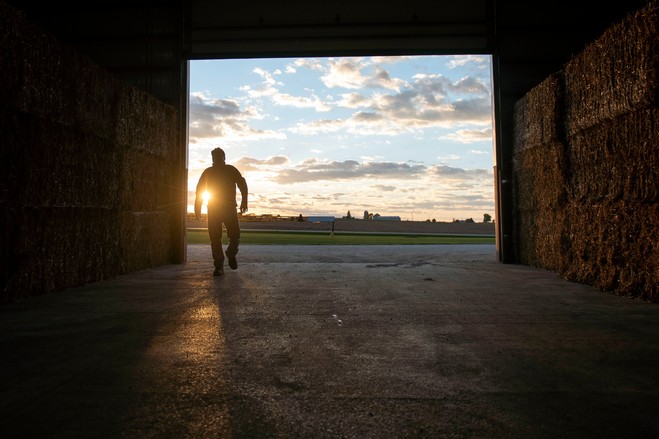
“I was pretty naive. I thought you drilled a well and had good water,” he says. “Now I’m stuck with a $10,000 dirty hole in the ground.”
Related Articles:
Could Organic Pesticides Be The Next Gold-Rush For Entrepreneurs? (#GotBitcoin?)
Consumer’s Appetite For Organic, Antibiotic / Hormone-Free Food Outstrips Supply (#GotBitcoin?)
Harvard Quietly Amasses California Vineyards—And The Water Underneath (#GotBitcoin?)
A Warming Climate Brings New Crops To Frigid Zones (#GotBitcoin?)
Poll: How Likely Are You To Eat Cell-Based Meat?
Food Regulators To Share Oversight of Cell-Based Meat (#GotBitcoin)
Your questions and comments are greatly appreciated.
Monty H. & Carolyn A.
Go back
Leave a Reply
You must be logged in to post a comment.